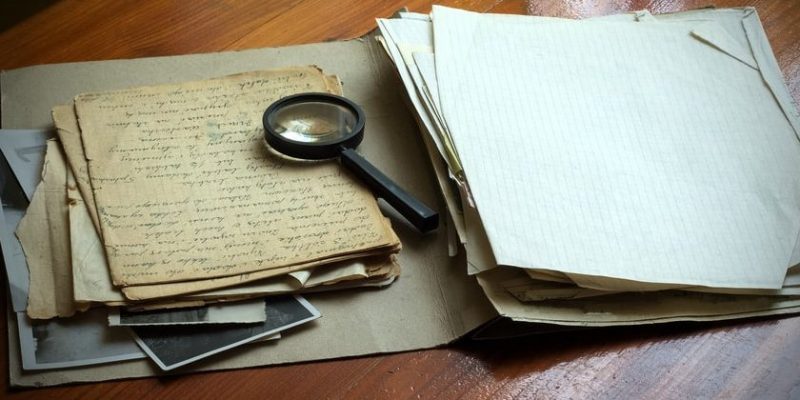We explain what documentary research is, the methodology it uses and how it is classified. In addition, its characteristics and examples.
What is documentary research?
A documentary investigation will be any investigation that has as its main working material a compilation of written, audiovisual or any other type of documents , which serve as a sample or memory of the events that have occurred and allow investigation in search of subsequent conclusions .
Thus, a documentary investigation will always focus on the review of an archive , made up of material of a diverse nature: books, newspapers , recordings, magazines, footage, photographs , etc. All this is known as documentary sources .
Research of this type is distinguished in its procedure and methodology from other models such as experimental research (which reproduces phenomena in controlled environments) or field research (which goes to reality to collect the data to be studied).
Definition of documentary research
Documentary research can be defined as a strategy for understanding and analyzing theoretical or empirical realities through the review, collation, comparison or understanding of different types of documentary sources referring to a specific topic, through a systematic and organized approach.
Documentary sources

All documentary research, as has been said, is based on documents to undertake the analysis . This type of sources (which we have already said can be very diverse) are understood as durable materials that collect the information of their time and allow us to access it at any time.
Thus, a documentary investigation can consult old or recent books , recorded TV programs , newspapers from the last century or even photographs of an expedition in which we did not take part.
The human being has devised better and better methods to capture and reproduce the historical conditions of his experience. We will call all these information devices “documents”.
Documentary units

This is the name given to the physical spaces (libraries, newspaper libraries, video libraries, etc.) or virtual spaces (digital catalogues, databases, etc.) that contain the documents to be consulted during the investigation.
Verbatim quotes
The textual citation is a usual and important practice in all documentary research, and consists of extracting or reproducing a fragment of the original text consulted , in order to interpret it and compare it with others.
To do this, it must be transcribed without adulterating its original meaning and respecting certain bibliographic and methodological standards that provide the necessary information together with the specific interpretation of the researcher .
Documentary research methodology

Documentary investigations undertake a methodology consisting of the following steps:
- Arching of sources. Thick selection of the material that could be useful for the investigation and composition of the archive, based on the central theme that it deals with.
- Revision. Discarding material that is not very useful or that has little reference to the specific objectives of the research.
- Comparison. Comparison and organization of the available material to obtain textual citations and references to support the researcher's interpretations or theories.
- Interpretation. Analysis of the collated material and preparation of a proposal for a critical reading , opinion, interpretation or deduction of the researcher.
- Conclusions. General closure around the topic, which collects the points demonstrated through the previous steps and its framework of possible causes and consequences or meanings.
Documentary research bibliography
All documentary research has a bibliography (better known as a reference section) where the reader must be provided with a list of the documentary sources consulted with their respective technical and methodological data, such as edition, page, year of publication, editorial data, authors. consulted, etc
It is about contributing everything that can be useful to a future researcher to investigate the work carried out or nurture any subsequent research on the same or a related subject.
Types of documentary research

There may be different forms of documentary research, depending on the type of sources consulted:
- Bibliographic research. The one that deals with reviewing published books and printed texts .
- Hemerographic research. Its material is made up of newspapers, magazines and periodicals of any kind.
- Audiovisual research. Review audio material, video or any non-written format, such as photographs.
- Archive research. Get hold of everything in a specific file batch, such as documents from a specific company , or correspondence from a specific author.
Documentary research techniques
This type of research is based on data location, extraction and fixation techniques , to build a conceptual and documentary map of all the extracted information.
It is assumed that whoever reads the research should be able to understand and reproduce the specific research of the researcher, in order to accompany him in the interpretation of what was obtained and in the formulation of the conclusions.
Importance of documentary research

Documentary research is vital in our civilization , given the enormous efforts we have made throughout history to leave evidence of our passage through the Earth .
The review of historical and/or documentary sources is key to understanding our past , interpreting our present and planning our future, based on the mistakes made and previous experiences.
Collective learning as a result of collective research also generates more written knowledge which in turn serves as a source for future researchers , who will be able to copy, interpret or improve the method used and produce new documentary works in turn.
Examples of documentary research
A perfect example of documentary research is the book Bolero Phenomenology (Monte Ávila Editores, 1990) by the Venezuelan professor and poet Rafael Castillo Zapata, where he compiles the lyrics of different popular songs of the bolero genre, to interpret their lyrics and thus build a hypothesis of how the sentimental teaching of the Hispanic Caribbean operates.
Another example of this would be the prologue of the book Classes of literature by Julio Cortázar (Alfaguara, 2013) , where the classes given by the Argentine writer at the University of Berkeley in 1980 are brought together.
Said prologue is prepared by the person in charge of constructing the edition , and therefore reading and ordering the material, Carles Álvarez Garriga, and in it the reader is offered his interpretation of the Cortázar material that he has worked on.
The above content published at Collaborative Research Group is for informational and educational purposes only and has been developed by referring to reliable sources and recommendations from technology experts. We do not have any contact with official entities nor do we intend to replace the information that they emit.
She has pursued her studies in The United States, where she has graduated in Business and Economics and is currently finishing her Master studies in International Economics and Finance. Miss. Amputee is fluent in three languages: English, Spanish and Russian and has elementary knowledge of French and Italian. She love exploring how Collaborative Research Group can become the best tool to achieve the (necessary) educational change. .
Leave a reply
Your email address will not be published. Required fields are marked *Recent post

Sport: What Is It, Types, Risks, Features, Characteristics and Examples

Dogs: Emergence, Features, Characteristics, Feeding and Breeds

Story: Definition, Elements, Structure, Features and Characteristics

